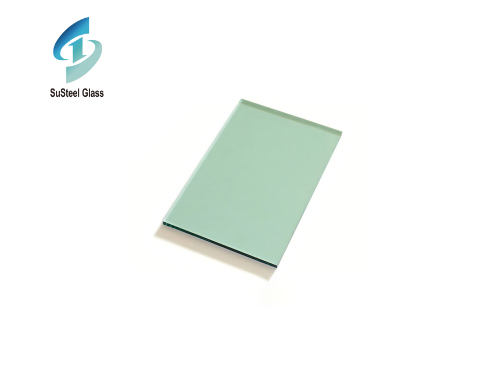
Thermal bending glass hollow glass has high quality heat insulation, sound insulation effect, can save energy from the source, reduce noise, beautify the environment. In addition, the use of heat-bent glass insulating glass can also simplify the structure, reduce weight, increase lighting and reduce cost. Therefore, hollow glass is widely used in building curtain walls and doors and Windows. As a new member of the newly developed insulating glass family -- hot curved insulating glass, the following problems must be paid attention to in the production and use:
First, the hot bending of glass
It is required that the hot bending has good appearance quality, so we should choose the high quality float glass, and adopt the appropriate hot bending mold and scientific and reasonable hot bending process. The hot bending glass products are required to have smooth surface, no visible spots, pitting spots, and meet the requirements of product dimensional tolerance. In addition, considering the consistency of the composite piece, the two pieces of hollow glass must be thermally bent in pairs to ensure a good fit.
Two, the shortcomings of hot bending insulating glass
It is well known that bending laminated glass for automobile has a high requirement for light distortion, because the visual double image is easy to produce fatigue, which leads to traffic hazards. Compared with laminated glass, thermal bending hollow glass will lead to greater optical distortion and distortion rate compared with a pair of glass with the same thermal bending mass. Therefore, thermal bending hollow glass is not used in traffic vehicles.
Hot curved hollow glass will inevitably have large optical distortion, which is easy to produce double image in use, and there is no requirement of this index in the line standard. Therefore, it is not suitable for use in traffic vehicles and precision observation posts, and the use of buildings. The requirements of light distortion also need to be discussed in detail. It is better not to use this product scheme in strict places.
 High Purity Tin Ingot: Essential Uses and Key Advantages
High Purity Tin Ingot: Essential Uses and Key Advantages
 Burglar-Resistant Glass: Enhancing Security and Peace of Mind
Burglar-Resistant Glass: Enhancing Security and Peace of Mind
 Exploring the World of Green Tinted Glass Products: Versatility and Sustainability
Exploring the World of Green Tinted Glass Products: Versatility and Sustainability


